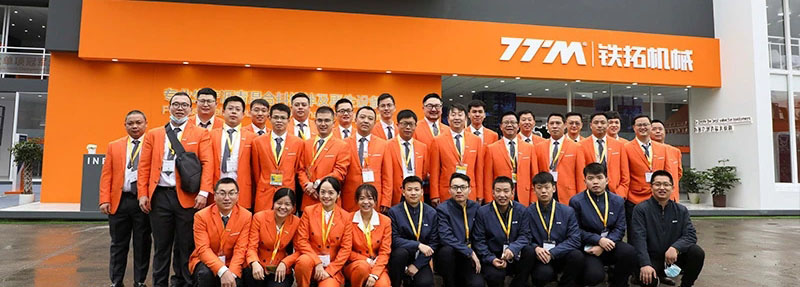Why the Right Asphalt Mix Plant Types Matter More Than Ever
Contractors used to pick an asphalt plant the way they picked a pickup—whatever was on the lot and within budget. Today, margins are razor-thin, spec books read like legal thrillers, and cities sniff out emissions the way bloodhounds track fugitives. Choosing the correct asphalt mix plant types can make the difference between a project that prints money and one that bleeds it.
What Exactly Are the Main Asphalt Mix Plant Types?
Google “asphalt mix plant types” and you’ll drown in jargon: batch, drum, continuous, parallel-flow, counter-flow, stationary, relocatable, mobile—yikes! Let’s slice through the noise and look at the four families that actually show up on job-site spreadsheets.
Batch Plants: The Precision Workhorse
Batch plants weigh and mix each truckload in discrete “batches.” Think of it as baking cookies: measure, mix, bake, repeat. Because every ingredient is weighed separately, you can tweak the recipe on the fly—handy for airports or Super-pave specs where 0.3 % more filler can save a runway from rutting. The downside? Frequent start-stop cycles burn extra fuel and push NOx emissions up.
Drum-Mix Plants: The Marathon Runner
Here the aggregate slides down a long, heated drum while liquid bitumen is injected downstream. No screens, no hot bins, no interruptions—just a smooth, continuous ribbon of mix. You trade pinpoint accuracy for sheer volume; a 400 tph drum plant can lay down a four-lane interstate faster than most folks finish their coffee. But if you need multiple mix recipes in one shift, drum plants feel like using a fire hose to fill shot glasses.
Counter-Flow vs. Parallel-Flow: The Hidden Sub-Plot
Within drum plants, the direction of the exhaust gas relative to the aggregate flow matters more than most specs admit. Counter-flow designs send the flame against the material stream, shaving 8–12 % off fuel tabs and chopping emissions by up to 40 %. Parallel-flow is cheaper to buy, but you’ll pay the delta back in burner tips, carbon taxes, and neighbor complaints.
Mobile, Relocatable, or Stationary: Which Silhouette Fits Your Wallet?
Let’s talk footprint. A stationary behemoth may crank out 500,000 tons a year, but the steel alone needs 1,200 cubic meters of concrete foundation. A mobile plant, by contrast, can be hitched to a tractor and dragged to the next county in a weekend. The sweet spot for many DOTs? Relocatable plants—skid-mounted modules that bolt together in three weeks yet come apart without torches. Rule of thumb: if the project scatters across a 150-mile radius, mobility beats sheer throughput.
Warm-Mix Add-Ons: The Quiet Disruptor
All modern asphalt mix plant types can bolt on foam, wax, or chemical warm-mix kits. The marketing guys promise 30 % energy savings and 50 % odor reduction; field data shows 12–18 % savings on average. Still, that’s enough to bump you into the low-bid seat on municipal tenders where “green points” score real dollars.
How to Run the ROI Math Without an MBA
Forget fancy spreadsheets—grab a napkin:
- List annual tonnage your contracts demand.
- Multiply by 15 years (depreciation life).
- Compare fuel, electricity, and additive costs for each plant type.
- Add $2 per ton for every 50 miles you haul mix beyond 25 miles.
- Subtract emission-credit rebates if you’re in California or the EU.
Voilà: the lowest net cost per ton wins. Most crews discover that a counter-flow drum with a 30 % RAP (reclaimed asphalt pavement) feed ends up 8–11 % cheaper over a decade than a high-spec batch plant, even if the batch option “only” cost $1.2 M upfront.
Used, New, or Refurbished: Where the Real Bargains Hide
Here’s a nugget nobody puts in glossy brochures: OEMs often refurbish 10-year-old plants to “zero-hour” status, swapping drums, shafts, and PLCs for half the sticker price of new. The catch? Lead times stretch 14 months thanks to post-pandemic supply chains. If your backlog is solid, that refurbished counter-flow drum plant could slash CAPEX by 45 % without the teething pains of a fresh design.
Common Spec Mistakes That Trigger Change Orders
One typo—specifying a 9.5 mm batch when the city later demands SMA 13—can force you to add a second screen deck, two hot bins, and a fiber feeder. Cha-ching: $380 k gone. Always write performance specs, not hardware laundry lists, and leave wiggle room for future mix types.
What’s Next in Plant Tech?
Hybrid electric burners, hydrogen-ready dryers, and AI-controlled RAP feed ratios are moving from lab to field in 2025. Early adopters in Sweden already hit 100 % recycled mix without blue smoke. The takeaway? Buy a plant that can retrofit, not one that’s “good enough forever.”
Bottom Line: Match Plant Type to Business Model, Not Vice Versa
If 70 % of your revenue is highway patching, a 120 tph mobile drum plant with warm-mix foam will pay itself off in 18 months. If you chase airport overlays, invest in a high-precision batch tower and charge the premium. The wrong asphalt mix plant types will happily bankrupt you while the right one quietly prints cash—sometimes in the very first season.

